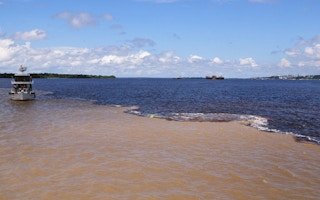By the close of the century, parts of the Southern Ocean could become impoverished as more acidic seas displace abundant marine food resources. Tiny sea snails that form the basis of the food supply for one of the world’s richest ecosystems could disappear because the depth at which they can form their shells will have shifted.
Right now, in Antarctic waters, creatures known as pteropods can exploit the calcium carbonate dissolved in the oceans down to a depth of 1000 metres to grow their shells.
But as atmospheric carbon dioxide levels soar, as a consequence of profligate use of fossil fuels by humankind, the chemistry of the oceans will shift towards the acidic.
The ratios of two kinds of carbonate – calcite and aragonite – will alter. And by 2100, there won’t be enough aragonite.
Right now, pteropods flourish in the top 300 metres of the ocean. By 2100, the survival zone for the pteropods will end at a depth of 83 metres.
And, scientists warn in the journal Nature Climate Change, this could “change food web dynamics and have cascading effects on global ocean ecosystems.” In other words, the larger fish and marine mammals that feed on the smaller creatures that in turn depend on a basic diet of pteropods will have nothing to eat.
And that can only be bad news for global fisheries.
All shelled marine creatures – the tiny coccolithophores that die and leave their shells as chalk, the clams and molluscs, the foraminifera that float on the surface or coat the rocks and the seafloor, and the corals that are the basis for rich tropical ecosystems, all depend on the right levels of calcite and aragonite to form their exoskeletons.
The oceans are the biggest living space on the planet: the waves cover 70 per cent of all living space and the depth of the deepest trenches is far greater than the highest terrestrial mountain ranges.
“
A pocket of corrosive water will sit just below the surface, making life difficult for these communities of primarily surface-dwelling organisms.
Origin of life
The oceans are the crucible in which life first emerged, and the oceans ultimately provided the sediments from which humankind has built its cities.
US and Norwegian scientists chose one species with precise needs in one reach of ocean as an indicator or what climate change driven by ever greater levels of the greenhouse gas carbon dioxide could do to an ocean ecosystem.
They found that what they called the “aragonite saturation horizon” became dramatically shallower as the seas became more acidic.
“These calcifying organisms will struggle to build and maintain their shells as acidification proceeds,” said Nicole Lovenduski, of the University of Colorado at Boulder, one of the researchers.
Inevitable result
“In the future, a pocket of corrosive water will sit just below the surface, making life difficult for these communities of primarily surface-dwelling organisms.”
As the world warms, acidification of the oceans becomes inevitable. Researchers have repeatedly warned that such change can only diminish ocean life, harm the coral reefs and kelp forests that shelter the rich biodiversity of sea creatures, change the behaviour of fish and some kinds of shrimp and threaten the shellfish harvest.
But for the first time, scientists have been able to model the impact of atmospheric change on the ocean chemistry in one zone at precise depths. The message is that right now, the pteropods have plenty of sea space for survival. But the aragonite saturation horizon may have already begun to shift in some places: perhaps as early as 2006, or as late as 2038. Once change begins, it will continue.
“If emissions were curbed tomorrow, this suddenly shallow horizon would still appear, even if possibly delayed,” said Dr Lovenduski. “And that, inevitably, along with lack of time for organisms to adapt, is most concerning.”
This story was published with permission from Climate News Network.

















